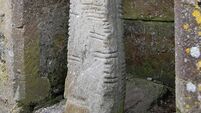Osteoporosis link to gene
A study involving more than 80,000 people worldwide undergoing scans has led to the breakthrough.
Osteoporosis is a common, silent, and often devastating age-related disease. Half of people who fracture their hip after age 80 die within 12 months. Women older than 65 years are at greater risk of dying after hip fracture than after breast cancer. The disease is strongly genetically determined, but the genes responsible have been largely unknown, until now.













